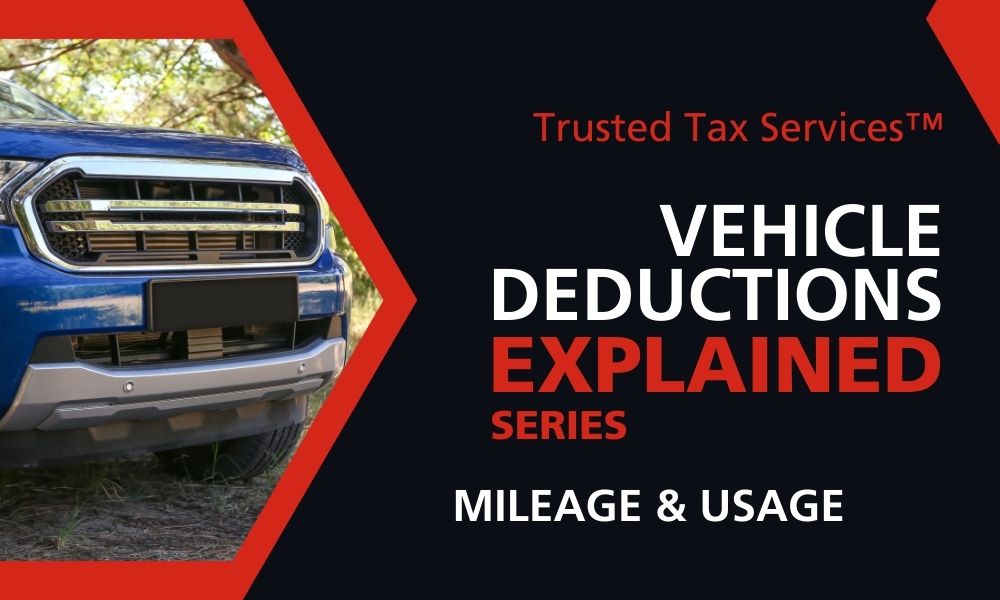Self-Employed (But Not Incorporated)
Percentage of Annual KM Method
This is the easiest method to grasp - add up the total number of kilometers that you drove in your vehicle last year, and then figure out how many of those were for personal and how many were for business.
If 60% of the mileage from business travel can be qualified as "business use", then 60% of all your vehicle expenses during the year is written off.
In order to classify the mileage as "business use", here are some travel that would qualify:
- Driving to and from jobsites
- Driving to and from hardware store or lumber yard
- Driving to pickup and drop-off employees
- Out-of-town meetings with vendors, partners, customers
- Driving to meet with your accountant
Here is travel that would NOT qualify:
- Driving from your home to your office or warehouse and back to your home
- Grocery runs for yourself and your family
- Driving the kids to sports practice (even if you are a team-sponsor)
- Out-of-town personal trips such as for holidays or vacation
- Driving to and from the golf-course or clubhouse
What Can I Writeoff?
Once you determine what mileage is business and what is personal, it's important to keep a mileage log. Here is CRA's official rules for vehicle deductions along with a guide on how to maintain a proper logbook
Here is a list of common vehicle expenses that you'll need to keep receipts for:
- Fuel (Gas)
- Car-Washes & Detailing
- Safety, Registration, Government Fees
- Decals, Vehicle Wrap for Advertising
- Repairs & Maintenance including Winter Tires
- Car Insurance
- Temporary or Monthly Parking
Here are vehicle expenses that are NOT deductible:
- Parking Fines (Tickets) & Driving Infractions
- Purely cosmetic upgrades such as spoilers or exhaust on passenger vehicles
- Vehicle expenses incurred on personal trips such as during a vacation or holiday
You can deduct motor vehicle expenses only when they are reasonable and you have receipts to support them. To get the full benefit of your claim for each vehicle, keep a record of the total kilometres you drive and the kilometres you drive to earn business income.

Corporation Owners
Mileage Method
Under the mileage method, individuals who are employees or owners of their own corporation can deduct business mileage based on a standardized rate for each kilometer they drive for business purposes.
The official rates for 2023 are:
- 68 cents per km for the first 5000 km driven, up seven cents since from the 2022 rates
- 62 cents for each additional kilometre
The CRA advises that individuals and businesses seeking to claim deductions for their allowances maintain a comprehensive and precise record of their business mileage. This practice is crucial because there have been past cases in which the CRA rejected mileage logs due to incomplete or inaccurate data. The full guide on how to manage your business deductions and mileage is published by the Canada Revenue Agency
Company Owned Vehicles
Vehicle that are purchased and owned by your Corporation seem like a great idea, but be extra careful when differentiating between personal and business mileage. This is because of the Stand-By Charge - resulting in extra taxes owed by you if you drive your company vehicle for personal use.
For more information on vehicle deductions, stand-by charges, and the best way to purchase your vehicle, book a free consultation or give us a call to meet in the Windsor area.


